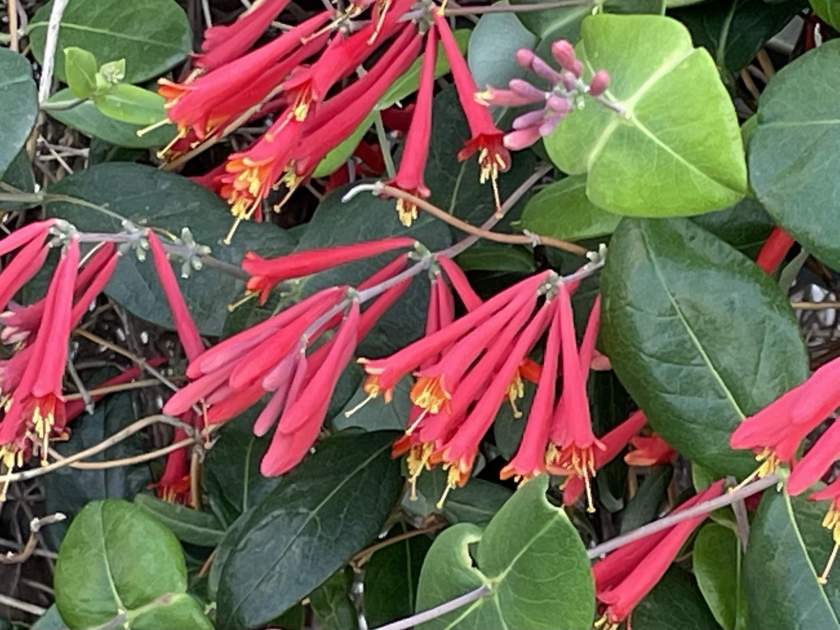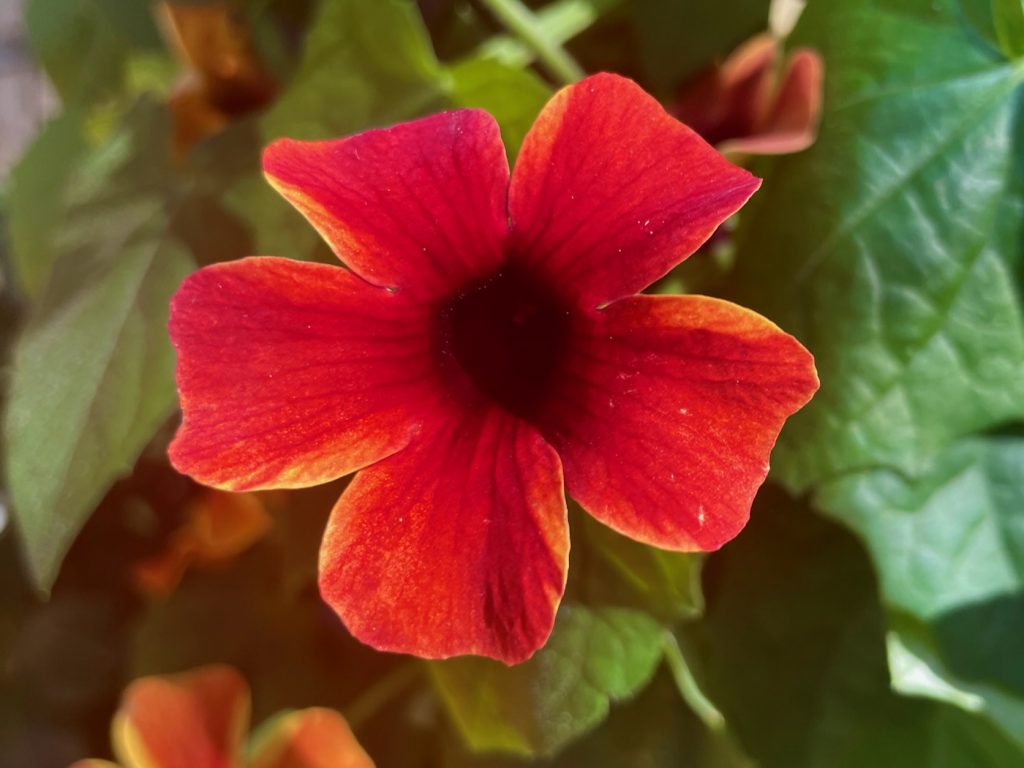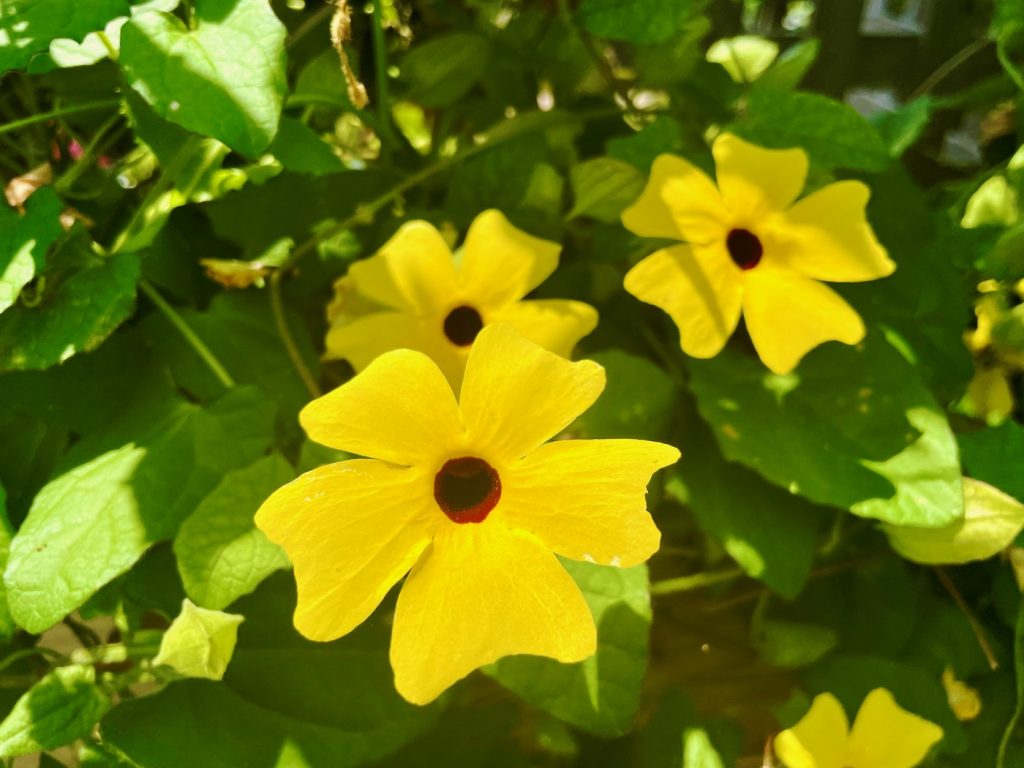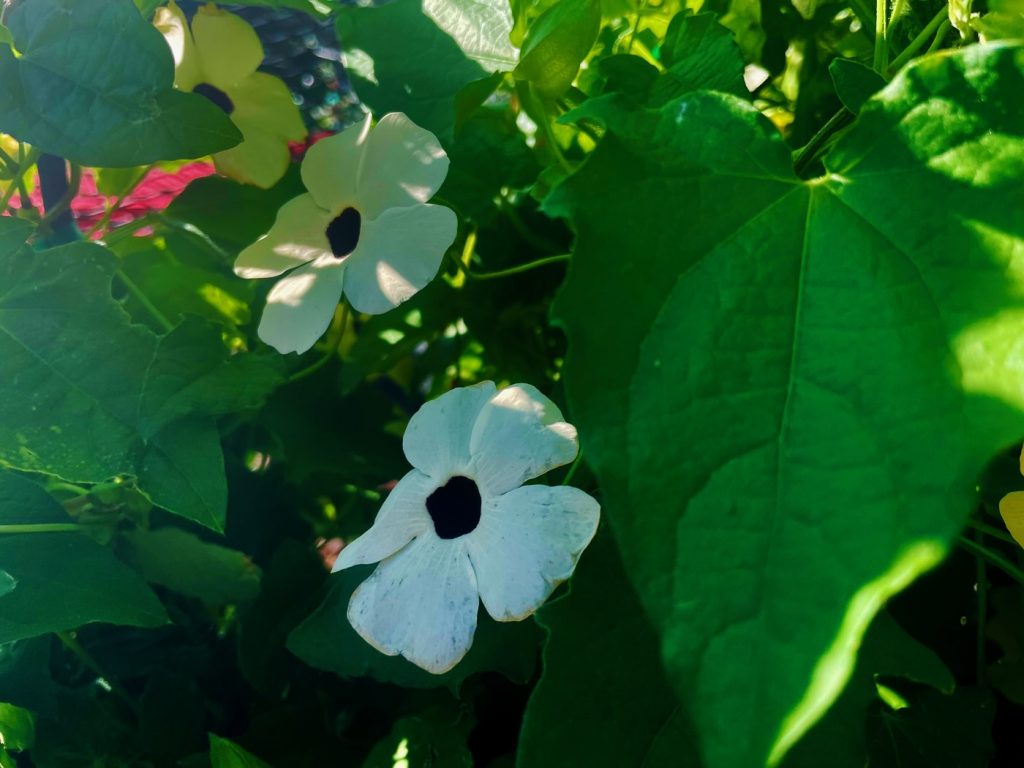Lonicera sempervirens, commonly known as Coral Honeysuckle, Trumpet Honeysuckle, or Scarlet Honeysuckle, is a flowering vine that belongs to the Caprifoliaceae family. It is native to the southeastern United States and is admired for its vibrant red, tubular flowers, and attractive foliage.
Coral honeysuckle is a twining vine that can reach a height of 3 to 6 meters or 10 to 20 feet. It has semi-evergreen to evergreen leaves that are opposite and oval-shaped, measuring around 5 to 8 centimeters in length. The leaves are glossy and dark green, providing an attractive backdrop to the striking flowers.
The trumpet-shaped flowers of Lonicera sempervirens are the main highlight of this vine. They are typically bright red, but can sometimes appear orange or yellow. The flowers bloom in clusters and are fragrant, attracting hummingbirds, bees, and butterflies. The blooming period usually occurs from late spring to early summer but can extend into the fall season.
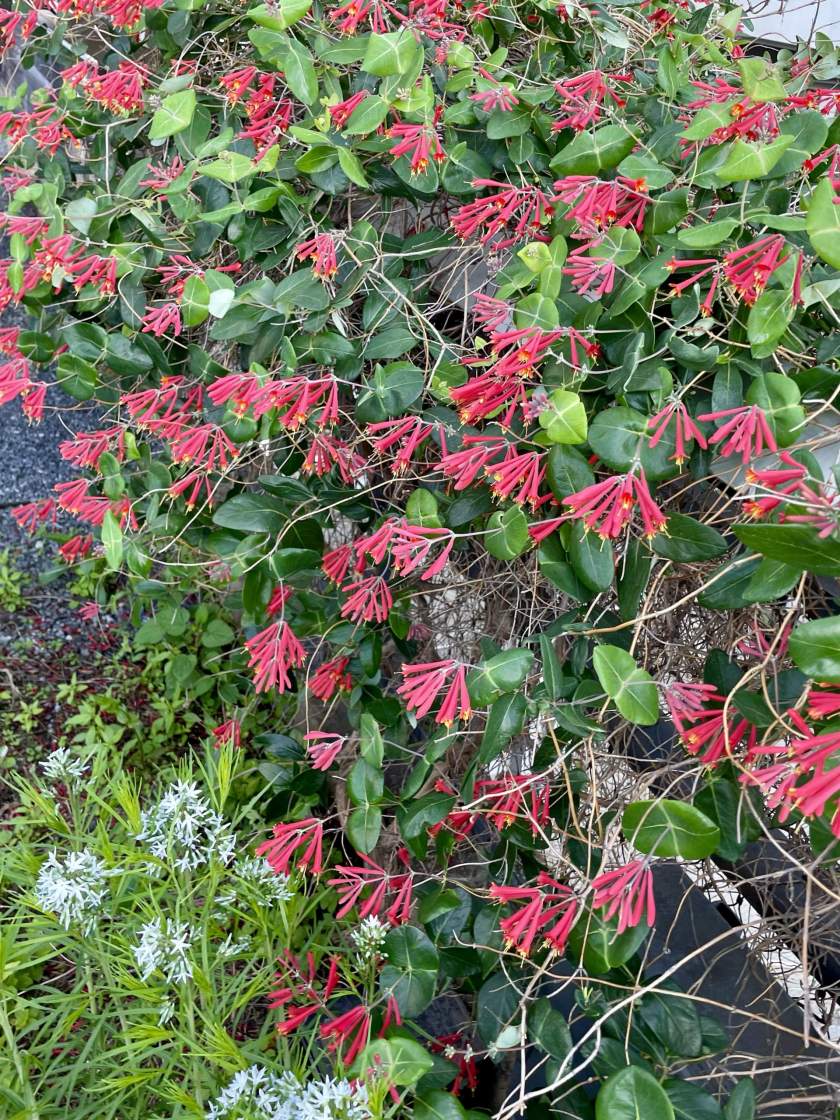
How to grow Lonicera sempervirens:
In terms of growing conditions, Coral Honeysuckle prefers a spot with full to partial sun exposure. It can tolerate various soil types, but well-draining soil is recommended. This vine is adaptable and can thrive in both moist and dry conditions once established. It is also moderately drought-tolerant.
When planting Coral Honeysuckle, ensure that there is a trellis, fence, or other support structure for the vine to climb. The vine can be trained to grow vertically or horizontally, depending on your preference and available space. Proper support will allow the vine to reach its full potential and showcase its cascading clusters of flowers.
Regular watering is essential during the establishment phase to help the plant develop a strong root system. Once established, coral honeysuckle is relatively low-maintenance and can withstand periods of drought. However, providing supplemental water during prolonged dry spells will promote healthier growth and more abundant flowering.
Pruning can be done in late winter or early spring to maintain the shape of the vine and remove any dead or damaged wood. Coral honeysuckle generally does not require heavy pruning unless it has become overgrown or unruly. Light trimming throughout the growing season can help maintain a neat appearance.
Coral honeysuckle can be propagated through seeds, stem cuttings, or layering. If you choose to collect seeds, they can be sown in a well-draining potting mix and kept moist until germination occurs. Stem cuttings can be taken from a healthy parent plant and rooted in a suitable rooting medium. Layering involves bending a flexible stem to the ground, covering it with soil, and waiting for it to develop roots before severing it from the parent plant.
In summary, Lonicera sempervirens, or Coral Honeysuckle, is a beautiful flowering that features attractive red, tubular flowers and glossy foliage. It prefers full to partial sun exposure, and well-draining soil, and can tolerate various growing conditions. Providing support for the vine to climb, regular watering during establishment, and occasional pruning is important for its care.

